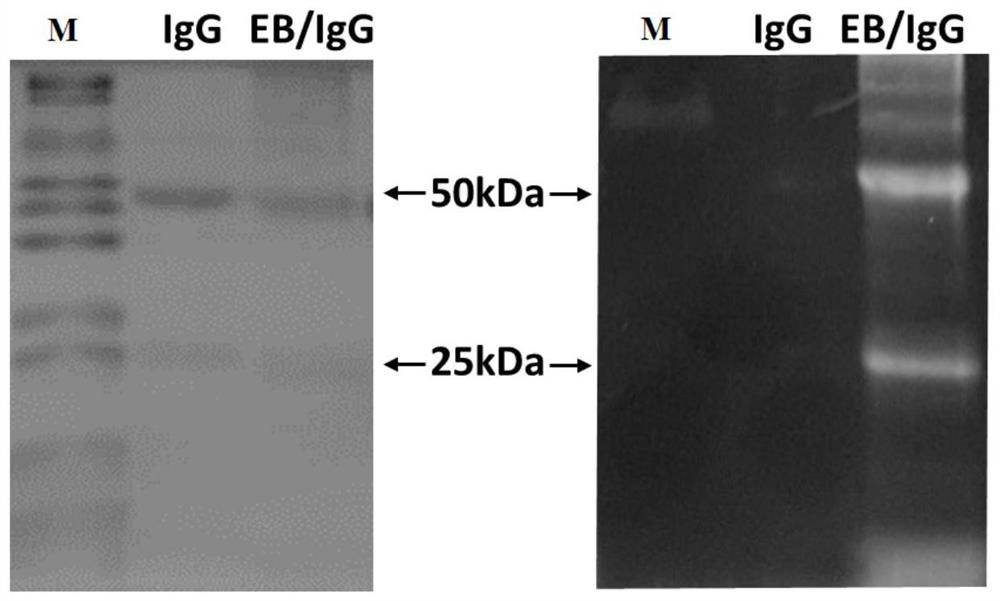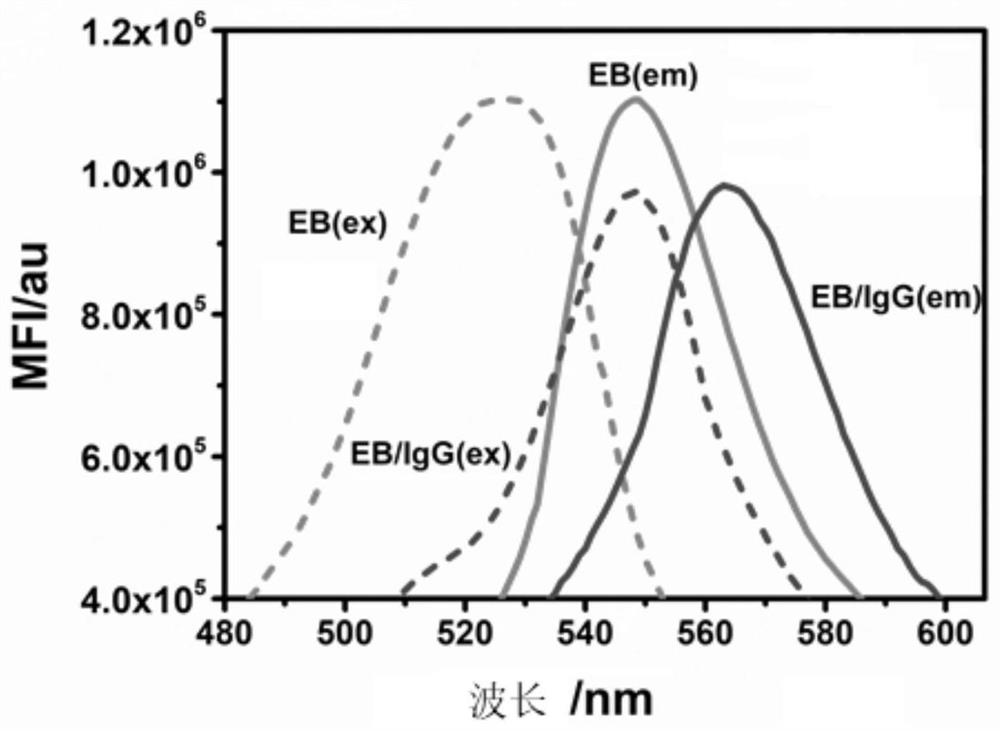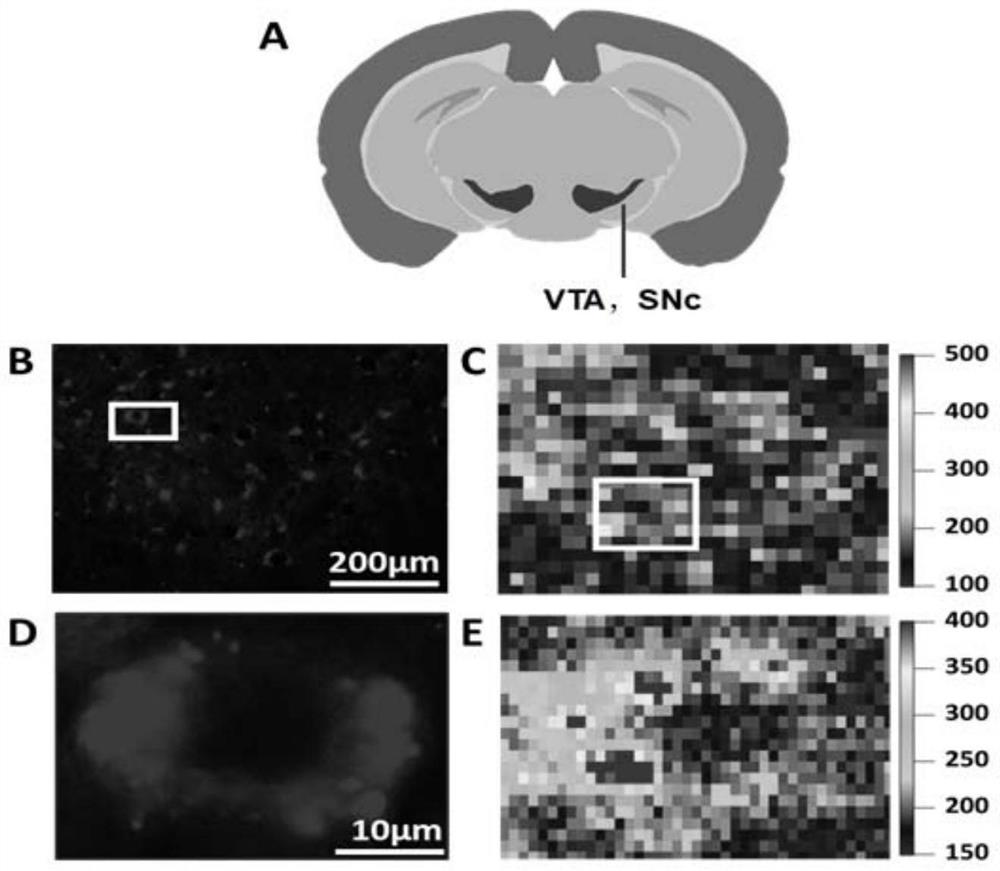X-ray fluorescence and fluorescence bimodal imaging probe based on synchrotron radiation light source as well as preparation method and application of X-ray fluorescence and fluorescence bimodal imaging probe
A dual-mode imaging and fluorescence imaging technology, which is applied in the preparation of X-ray contrast agents, preparations for in vivo tests, and pharmaceutical formulations, to achieve fluorescence imaging and synchrotron radiation X-ray fluorescence imaging, with mild reaction conditions and simple operation Effect
- Summary
- Abstract
- Description
- Claims
- Application Information
AI Technical Summary
Problems solved by technology
Method used
Image
Examples
Embodiment 1
[0043] Example 1 Preparation of Phycoerythrin B-Immunoglobulin G Complex
[0044] Take 5.2 mg of Phycoerythrin B, 1 μL of triethylamine, and 10 μL of isobutyl chloroformate, dissolve it in 360 μL of 1,4-dioxane, and react at -10°C for 1 hour before use. Dissolve 0.622 mg of immunoglobulin G in 240 μL of PBS buffer and 60 μL of carbonate buffer for use, add 4 μL of Phycoerythrin B reaction solution and react overnight at 4°C. Remove the organic reaction solvent through a dialysis bag, dialyze in PBS solution for 48 hours, replace the PBS solution every 12 hours, centrifuge at 3000 rpm to remove large particles formed due to aggregation, use a sephadex G25 desalting column to achieve efficient desalination, and remove it through a 10000 ultrafiltration tube For particles below 10kDa, small molecular substances are removed to obtain a 150kDa complex of phycoerythrin B-immunoglobulin G.
[0045] In this example, the molar ratio of immunoglobulin G to phycoerythrin B is 1:15.
Embodiment 2
[0046] Example 2 Identification of Phycoerythrin B-Immunoglobulin G Complex
[0047] Take immunoglobulin G and phycoerythrin B-immunoglobulin G, boil with bromophenol blue loading buffer at 95°C for 10 minutes to denature, and after cooling, go through sodium dodecyl sulfate-polyacrylamide gel electrophoresis to treat bromophenol The blue reaches the bottom and stops, stained in the rapid Coomassie brilliant blue staining solution for 30-60min, decolorized using Syngene GBOX chemiluminescent imager and BlueLight Gel Imager to shoot the glue.
[0048] Such as figure 1 As shown, the band of immunoglobulin G connected with phycoerythrin B is close to that of immunoglobulin G under white light conditions, while under the irradiation of ultraviolet light with a wavelength of 340 nm, the light chain of phycoerythrin B-immunoglobulin G complex and The heavy chain band showed yellow-green fluorescence, indicating that Phycoerythrin B was successfully attached to IgG. It should be un...
Embodiment 3
[0050] The preparation of embodiment 3 tissue sample
[0051] The ventricle was perfused with 4% paraformaldehyde and dehydrated with sucrose, and a 30 μm thick section was cut out using a Leica CM1950 microtome. The tissue section sample was placed at the bottom of a 24-well plate, and incubated with the primary antibody of the target neuron at 4°C for 18 hours. ~ 24 hours, and then co-incubated with the phycoerythrin B-immunoglobulin G complex in Example 1 for 2 hours at room temperature, sucked off the complex solution and washed, pasted the tissue on the mylar membrane, at room temperature Air dry under dark conditions.
PUM
 Login to View More
Login to View More Abstract
Description
Claims
Application Information
 Login to View More
Login to View More - R&D
- Intellectual Property
- Life Sciences
- Materials
- Tech Scout
- Unparalleled Data Quality
- Higher Quality Content
- 60% Fewer Hallucinations
Browse by: Latest US Patents, China's latest patents, Technical Efficacy Thesaurus, Application Domain, Technology Topic, Popular Technical Reports.
© 2025 PatSnap. All rights reserved.Legal|Privacy policy|Modern Slavery Act Transparency Statement|Sitemap|About US| Contact US: help@patsnap.com



